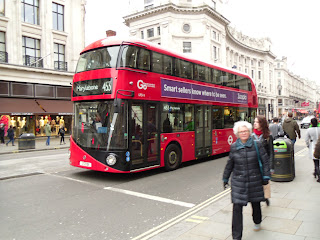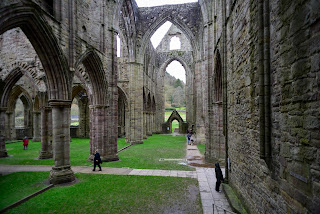I would like to acknowledge the many readers who have commented in person or in writing about my two previous books, The Excalibur Parchment and The Lucifer Scroll. Your appreciation and rave reviews are extremely encouraging (and a lot make me blush), so I am literally over the moon when you pass along your kind thoughts.
Each of the books is a stand-alone story, although obviously they and The Prince Madoc Secret (published Spring 2018) form an ongoing series. While they are fiction, I strive for as much precision and historical accuracy as possible. Any mistakes are my own, created by my own carelessness or stupidity. History is a story. It is the story of people. As that story is recorded (whether verbal or written) it changes based upon the perspectives of the individual telling the story. History is always open to interpretation. Out of the repeated tellings and re-tellings of a historical event, legends and myths are created. So, in the modern era, my protagonists see historical situations and artefacts through the prism of time and previous interpretations. Truth can sometimes be explained through this. J.R.R. Tolkien, author of Lord of the Rings and The Hobbit, saw this clearly. “I believe that legends and myths are largely made of ‘truth’ and indeed present aspects of it that can only be received in this mode”
In a day when society is such a tumult, I try to show the personal development of my characters as they struggle with the challenges set before them. Some are weighed down by previous disappointments and loses. Others are meeting real challenges for the first time. How they cope—whether it is anger, fear or faith—is a key developmental factor in the story. I have met great challenges in my life—personal as well as professional. Faith in God is the one constant I have had and has led me through and blessed me each time. For others, that is not a factor and I respect that. Some have great internal strength that takes them through. Others do not and drop into shells, reluctant to face the challenges life throws at them. Yet others react by building a sense of rage and revenge against those who laid the challenges before them. Each reacts in their own way, and I have tried to reflect that myriad of responses in the books.
Legends allow an exploration of those challenges in ways that are unique and, normally, outside the ordinary aspects of modern life.
I am also amazed at the way today’s news reflects and often jumps ahead of my stories. I say that because when I first started writing Excalibur I thought I had created a thoroughly unprincipled and evil set of zealots as my villains. Then along came ISIS and did more depraved things to humanity than I could ever have imagined. I have tried to explore the supernatural world and evil as it hovers around modern society, especially in Lucifer. Certainly, modern culture seems to want to explore this, particularly in movies and television. Then I see the news headlines and read about man’s inhumanity to man on an individual as well as mass basis so, again, I am trumped by reality.
Some have asked why my antagonists are Druids. For many, Druids and their ilk are confined to the mists of time. They are banished from our minds as “not modern” when, in fact, both cultural and religious Druids exist today. A simple internet search will show that. The answer to that question ‘why’ is both complex and simple. First, I was sick and tired of reading novels where the villains were always the same generic groupings—corrupt businessmen, politicians or church leaders; Nazis; neo-Nazis; Russian mafia, communists or post-communists. I wanted a ‘new’ group of villains that fit into the framework of the stories. Second, in any religious teaching, there always seem to be those who become brutal zealots violently and cruelly demanding obedience and “their way or the highway.” Since I wanted to explore the supernatural and issues of faith in challenging times, the Druids seemed to fit. I made them a zealous, violent branch of Celtic society where things like the supernatural world are, well, natural. The beliefs in fairies, leprechauns, the thinning veil between the underworld and the current world (especially at Halloween) fit with the themes I was developing, and are still a part of modern Celtic culture and thinking. Druids in ancient times (pre-Roman) were their society’s priests, philosophers, historians, judges, wisdom and bards, or storytellers. Today, in Wales, they are the poets and musicians that keep Welsh culture alive at Eisteffodds.
Having or searching for a faith to believe in is an essential component of the motivations of many of my characters. How they make the search and how successful they are, reflects, I believe, the modern search for spirituality in a secular world. For my main protagonists, faith is a critical part of who they are or who they are becoming.
Why have I set so much of all the books in Wales? Again, several reasons. Wales is a beautiful but little-known country, especially in North America where, if you think of Celtic nations, Ireland and Scotland come to mind immediately. Wales, not so much. Which is unfortunate because of all six Celtic nation—Wales (Cymru), Scotland (Alba), Ireland (Eire), Cornwall (Kernow), Brittany (Breizh), Isle of Man (Mannin)—Wales is closest to the original Celtic standards than any. (It is indeed little known. Look at any guided tour of Britain and you’ll hit England and Scotland and Ireland, but very few spend any time in Wales.) Yet, Wales is a land of myths and legends (the year 2017 was labelled by the Welsh government as ‘Year of the Legend’). Music and the arts are a core value. Castles and history ooze out of the ground (there are seven castles within a 15-mile radius of my hometown), more than any other nation in the world. History. Legends. Myths. I can think of no better, fresh setting for a novel than this proud nation that, like my protagonists face every challenge with courage, conviction and pride. Perhaps I might intrigue you enough to entice you to visit this marvellous land. I appreciate the ones who have joined me in tours of some of the key sites in the books.
So far, I have explored the well-known legends of King Arthur, Merlin and the mighty sword Excalibur—all fairly well known—in The Excalibur Parchment. The Lucifer Scroll delves into the lesser-known story of the Spear of Destiny, or Holy Lance and its accompanying legends. The Lance was the one used by the Roman Centurions in the crucifixion of Jesus Christ. According to the legends, the one who controlled the Lance would control the world. Certainly, Charlemagne (and his successors as Holy Roman Emperor) believed it, as did Napoleon and Adolf Hitler.
Then I came across the legend of Prince Madoc. He was the son of King Owain of Gwynedd in North Wales. As the other sons fought over succession to the throne, Madoc went his own way and turned to the sea. Leaning on the knowledge and experience of both Welsh and Irish fishermen who’d long fished in the western ocean (now known as the Atlantic) and, course, Viking predecessors, Madoc was intrigued by the stories of a fair land to the west. In due course, Madoc sailed west with two ships, found the land and returned to Wales. He immediately outfitted ten ships and sailed west with a colony of settlers. Madoc was never heard of again. But legends grew that he landed in Mobile Bay, Alabama and penetrated the continent. Stories abounded that light-skinned, taller native tribes in the interior spoke a language similar to Welsh. There are excavations of native settlements that, once exposed, look more like stone buildings surrounded by stone walls. European type settlements in places such structures had never before known. More stories abounded. In 1799, six skeletons were found in Kentucky, along with bronze shields supposedly with Welsh coats of arms. The stories were sufficiently strong that President Jefferson (himself of Welsh heritage) charged Meredith Lewis (also Welsh heritage) with tracking down the ‘Welsh-speaking Indians’ as part of the mighty Lewis and Clark expedition. Some historians and archaeologists pooh-pooh all this.
But, as they say, where there’s smoke there’s fire. Because we don’t know something today, does not mean it does not and never did, exist.
So, legend and history form the basis for yet another exploration. Did Madoc exist? Did he set out to cross the Atlantic? Did he and his followers land in and explore America, eventually dying or intermarrying with the native tribes, never to return to Wales? Something, I thought, worth exploring.
When I started writing The Prince Madoc Secret, I planned it as the third in the trilogy, I called The Oak Grove Conspiracies. My characters, however, tell the story; I am the mere recorder. They decided that while the story is complete as it stands, it is not finished. What happens with the legend of Madoc in the United States? Did he, in fact, travel into the interior? Did his people integrate with the indigenous peoples? Were they the ones who constructed stone fortifications and towns?
If I listen to my characters, they still have more to tell.
 For many years they were associated with the coal mines that dotted the entire area. Books and movies were made documenting the valleys, most notably the book, later a film “How Green was my Valley.” The coalmines closed—the last one in the early 90’s. The area became woefully depressed and poverty and joblessness was too often the norm.
For many years they were associated with the coal mines that dotted the entire area. Books and movies were made documenting the valleys, most notably the book, later a film “How Green was my Valley.” The coalmines closed—the last one in the early 90’s. The area became woefully depressed and poverty and joblessness was too often the norm.  It is an area of resourceful people. Tough people. Caring people. It is an area of great beauty. Steep valley sides are dotted with rows of stone miners’ cottages climbing up the valley as it gets narrower and narrower. Once huge piles of coal slag are now emerging as green landscapes because of regeneration projects. Rivers flow. Trees grow. People who once looked out on scarred, coal smoked visages now enjoy verdant green settings and new forests emerging.
It is an area of resourceful people. Tough people. Caring people. It is an area of great beauty. Steep valley sides are dotted with rows of stone miners’ cottages climbing up the valley as it gets narrower and narrower. Once huge piles of coal slag are now emerging as green landscapes because of regeneration projects. Rivers flow. Trees grow. People who once looked out on scarred, coal smoked visages now enjoy verdant green settings and new forests emerging.



















